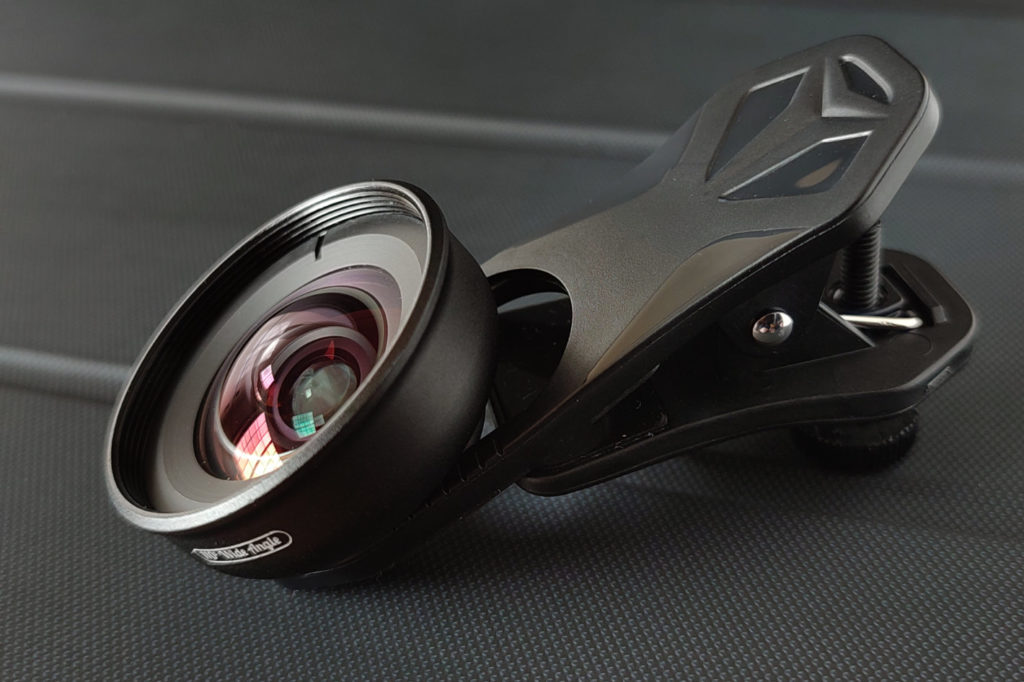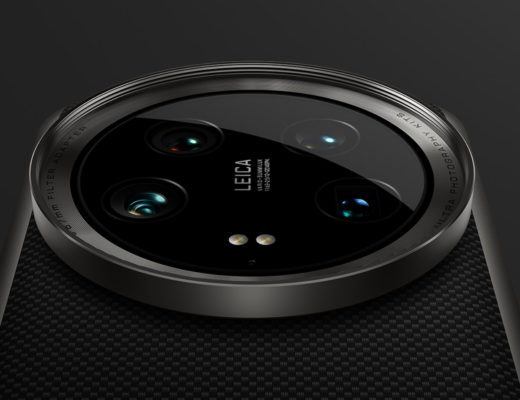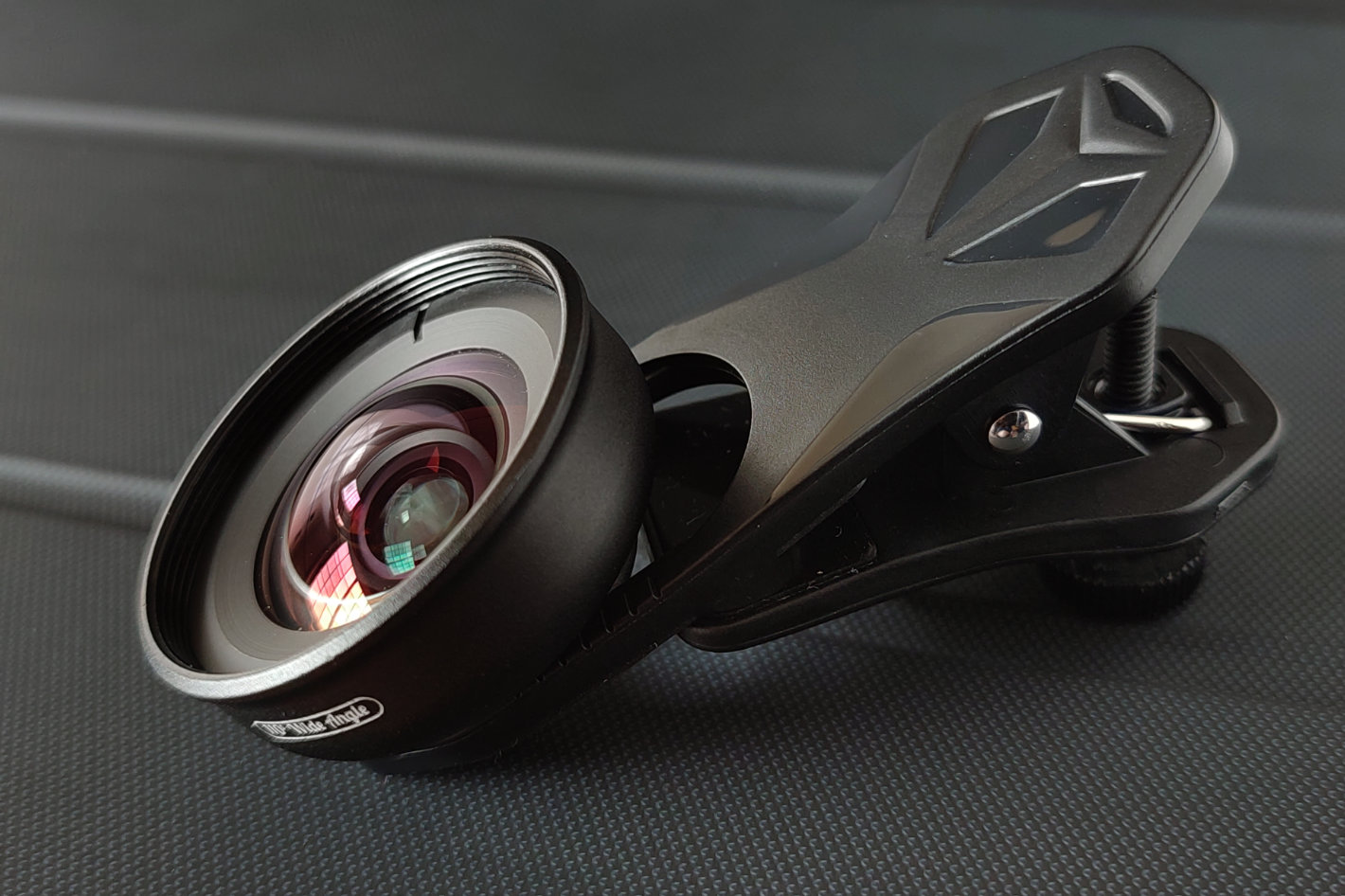 If you want to use a smartphone for some serious photography, the external lenses announced by some brands might seem like an interesting bet. Are they worth the investment? It depends!
If you want to use a smartphone for some serious photography, the external lenses announced by some brands might seem like an interesting bet. Are they worth the investment? It depends!
Throughout the last decade, the purchase of external lenses for use with a smartphone would be almost mandatory, in order to expand the options in terms of available focal lengths. Especially on simpler smartphones, the range of cameras/lenses present is limited, with sometimes only a single focal length – a wide-angle of around 24mm – so photographers wanting to use their smartphone regularly as a camera needed other options.
The most interesting solution in terms of photography is to have access to a lens with a longer focal length, so several manufacturers have presented a solution: an external lens that generally doubles the existing focal length to reach a value close to 50mm (compared to the 35mm format), a “nifty fifty” for smartphones. With this “telephoto” as the manufacturers immediately called it, it becomes possible not only to get close to subjects but also to create portraits without the usual distorting effects of a wide-angle.
The smartphone external lens industry has grown, with names like Olloclip, Moment, ShiftCam… plus dozens (hundreds?) of other names, usually of Chinese origin, first offering focal lengths in the 50mm range and soon extending the offer to other focal lengths, from fisheye lenses to 35x telephotos…
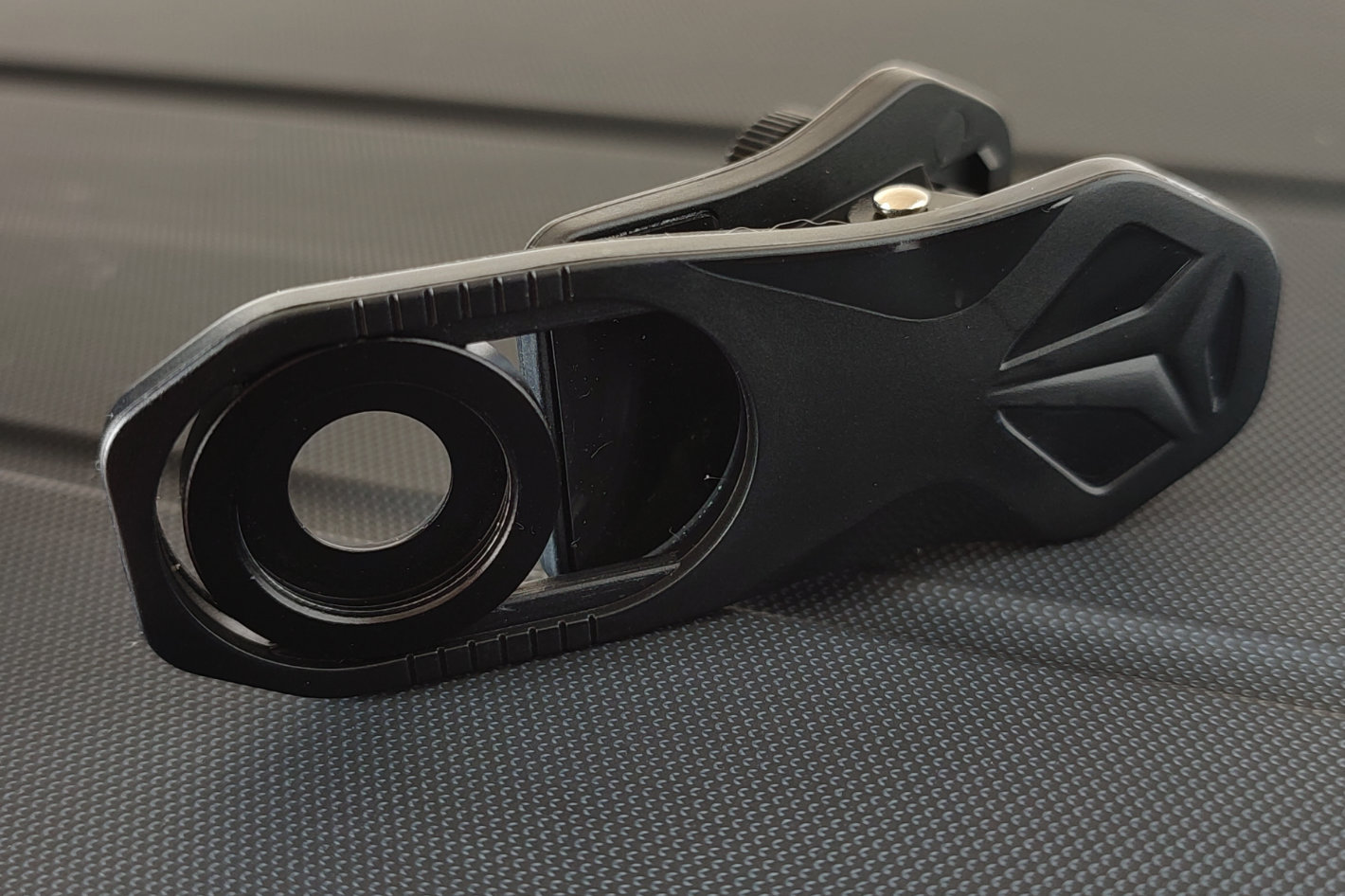 Olloclip closed in 2021
Olloclip closed in 2021
Until at least a couple of years ago, external lenses represented the only way to access more creative framing options, especially on mid-priced models, but the evolution of smartphones has also brought rapid camera/lens development, so that even simpler models offer a range of cameras that make the use of external lenses unnecessary in some cases.
This explains, perhaps, why a company like Olloclip, which touts itself as the creator of the first external lenses for smartphones – the company came on the market in 2011 – closed its doors in January 2021, in the middle of the pandemic, indicating that it will remain closed indefinitely.
Another company in the area, ShiftCam, founded in 2017, also has a limited market, not even having a European distributor, which means, for those not in the United States, that any purchase will be affected by customs duties. A popular brand, Moment, which mainly releases lenses and accessories for iPhone but offers some compatibility with Android models, also does not ship to all countries, so the options are relatively limited, leaving one to look at what is offered by manufacturers from Asian-origin.
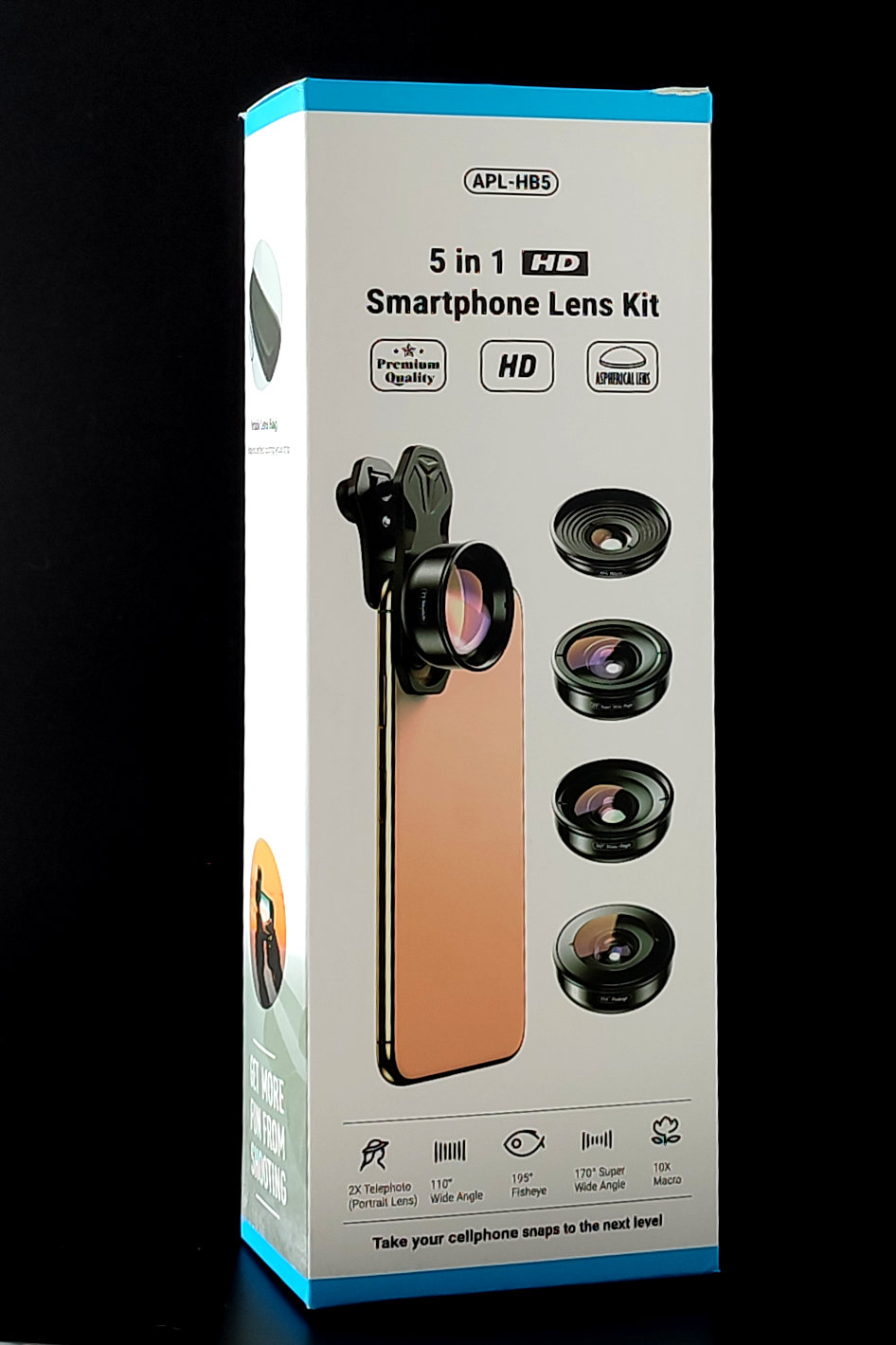 The Apexel 5-in-1 kit
The Apexel 5-in-1 kit
Out of dozens of options available I decided to choose Apexel, because I had previously purchased a macro lens for Android (subject to be explored in another article) for use with a 2017 Redmi Note 4, and the brand’s 2x telephoto seemed like an interesting option to extend the range of focal lengths to use with that smartphone, which features a single camera/lens.
After reviewing the entire Apexel offering, I opted for the five-lens kit – fisheye, super-wide-angle, wide-angle, telephoto 2x, and macro 10x – which I found to be a quick way to explore a substantial number of creative options, confirm the usefulness – or not! – of this optical set and be able to suggest others to purchase it. In this article I focus on four of the kit’s focal lengths – fisheye, super wide-angle, wide-angle and 10x macro – leaving out the 2x telephoto, as it deserves a second article.
The Apexel 5-in-1 kit represents, at least on paper, a good choice for those who want greater creative freedom. For +/- 50 dollars the photographer has five different lenses that allow to go from the fun but limited fisheye to macro. As I mentioned I left out the 2x telephoto, the one I was most interested in buying, which I will come back to in another article. This review reflects my personal preferences in terms of focal lengths. The preferences of each reader will be determinant in the decision to purchase this kit.
 Tested and forgotten
Tested and forgotten
Made of metal and presented in a protective case with lens caps, the focal lengths in this Apexel kit will be more or less useful depending on the type of photography or video one prefers. The 195-degree fisheye does not compete in terms of quality with identical focal lengths on conventional camera systems, and this is something that personally does not interest me: it is good for making fun images that surprise friends, but not for much else. That is why I assume that this focal length, after an initial period, will be forgotten in its protective case.
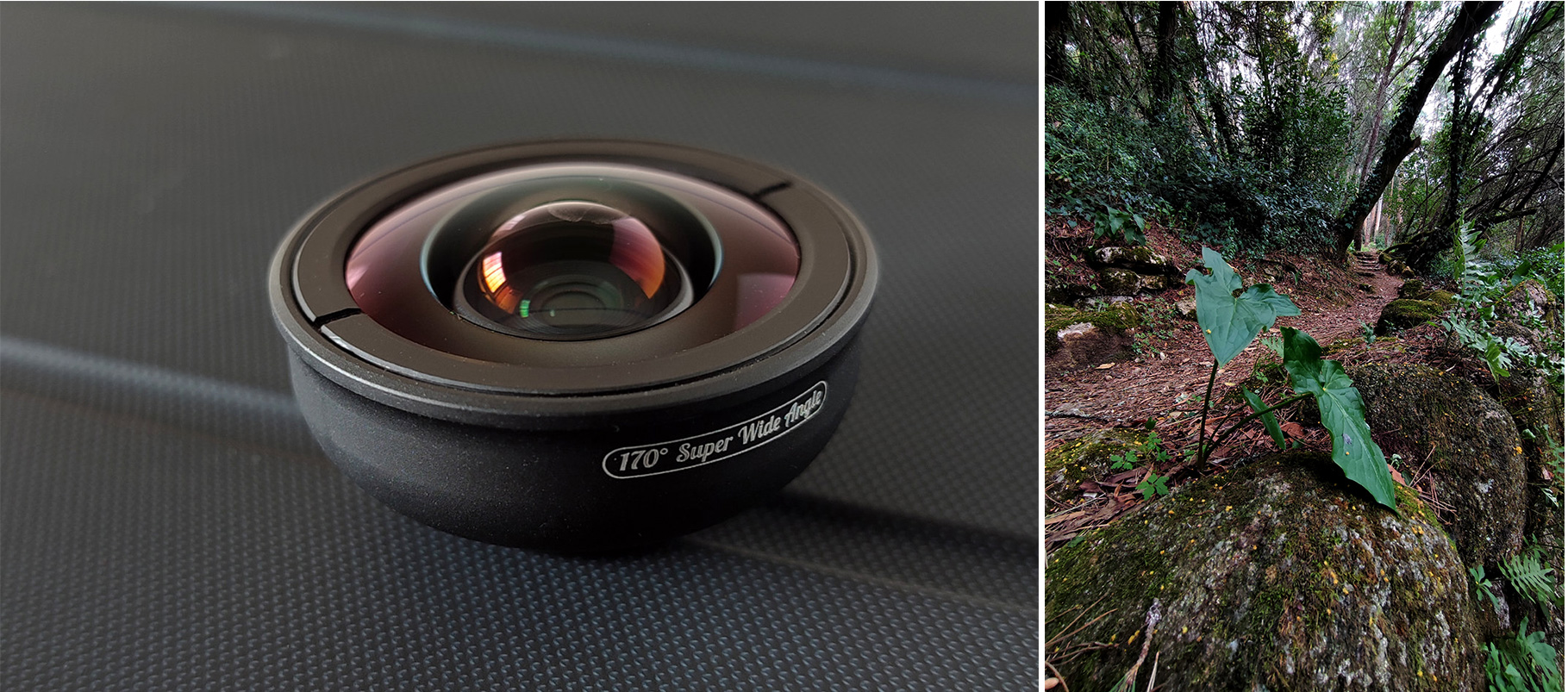 The super wide-angle 170 degrees is an interesting focal point for those who want to cover large areas, especially in landscape photography, but it requires creativity in the positioning of the elements in the framed area, so that the result is not large spaces filled with… nothing! Personally, it doesn’t seduce me, so other than a few test shots, it ended up in the protective case.
The super wide-angle 170 degrees is an interesting focal point for those who want to cover large areas, especially in landscape photography, but it requires creativity in the positioning of the elements in the framed area, so that the result is not large spaces filled with… nothing! Personally, it doesn’t seduce me, so other than a few test shots, it ended up in the protective case.
The 110-degree wide-angle was also used for testing and quickly put away, for the same reasons: the lens on the Xiaomi Redmi Note 4 turned out to be sufficient for what I wanted, and the Redmi Note 10 Pro that replaced it has a 118-degree ultra-wide-angle camera that offers better results more easily.
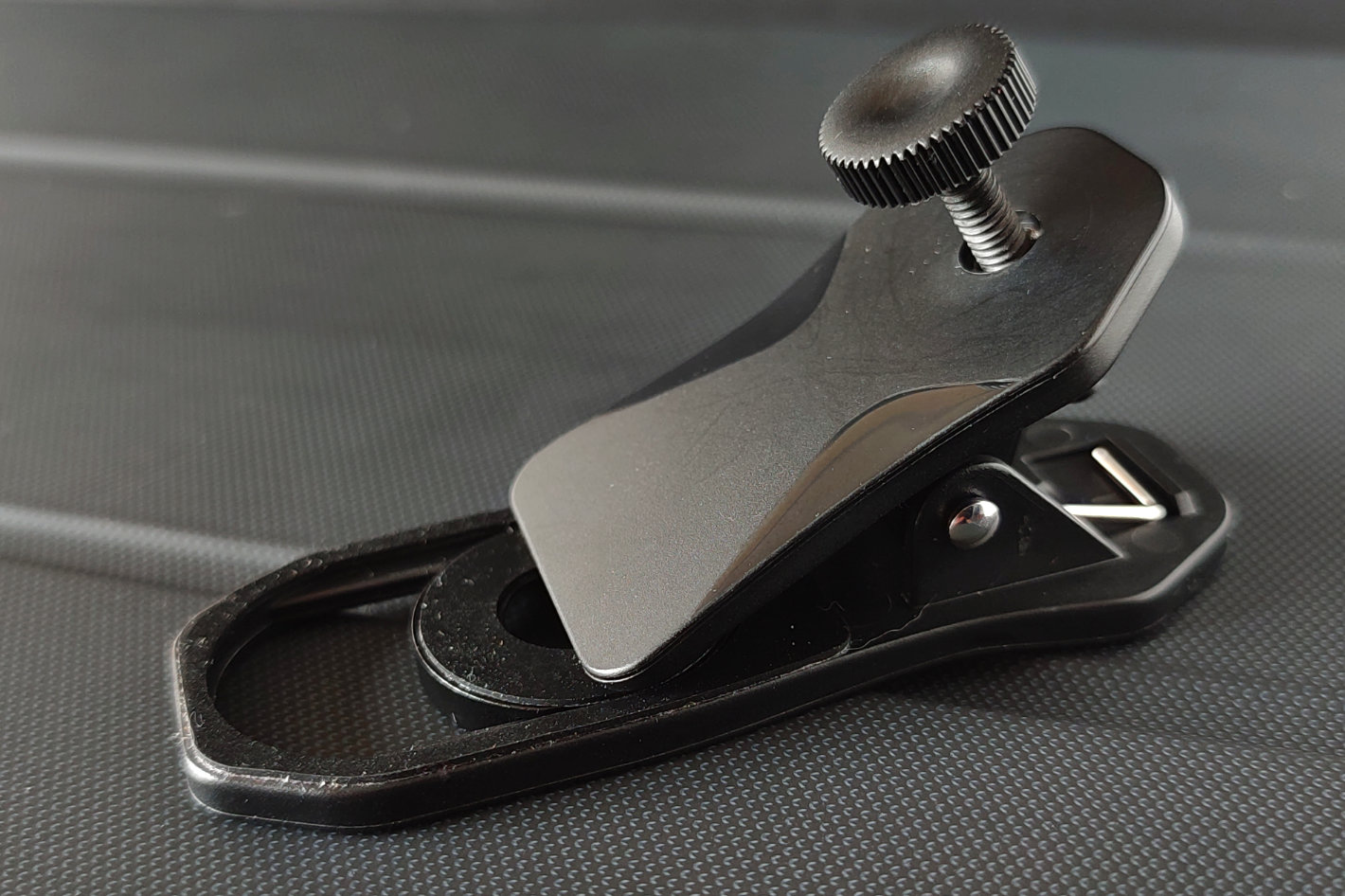 Cameras in smartphones are getting better
Cameras in smartphones are getting better
The evolution of smartphones, as I wrote above, has turned out to be bad news for the external lens business, because even affordable models offer multiple cameras that make the purchase of external lenses dispensable in most cases. One example: the Xiaomi Mi 9SE, a 2019 smartphone, has three cameras – the wide-angle, an ultra-wide-angle, and a 2x telephoto – in a device that costs less than $200.
 The 10x macro lens in Apexel’s kit also proved expendable, compared to the Apexel macro lens I already owned, and will return to in another article. Besides being more difficult to position properly to get sharp images, it confirms what I already thought: any photographer or videographer interested in capturing macro images with a smartphone will do better to purchase Apexel’s other offering in this area, than to purchase a set of lenses they will rarely use.
The 10x macro lens in Apexel’s kit also proved expendable, compared to the Apexel macro lens I already owned, and will return to in another article. Besides being more difficult to position properly to get sharp images, it confirms what I already thought: any photographer or videographer interested in capturing macro images with a smartphone will do better to purchase Apexel’s other offering in this area, than to purchase a set of lenses they will rarely use.
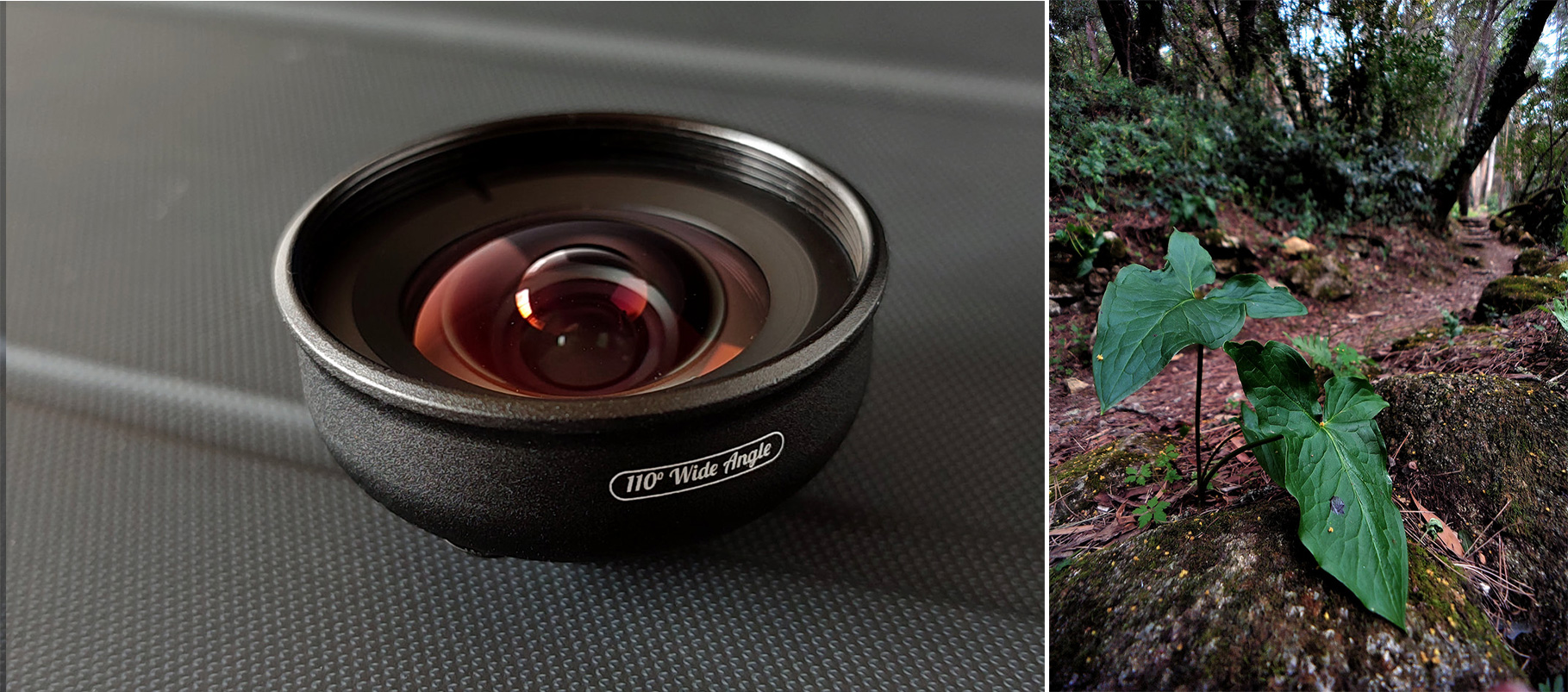 One of the problems with many of these kits lies in their poor optical quality, which becomes more apparent when you’re looking to get results that can be used for more than images shared on social media. For any photographer interested in making more use of a smartphone as a stills or video camera, it doesn’t make sense to start with higher quality optics and add a lower quality piece of glass to them. That’s why, despite the difficulty in obtaining external lenses from Moment or ShiftCam – since Olloclip is no longer an option – in some markets, prudence advises that these names figure as a choice at the top of the acquisition list.
One of the problems with many of these kits lies in their poor optical quality, which becomes more apparent when you’re looking to get results that can be used for more than images shared on social media. For any photographer interested in making more use of a smartphone as a stills or video camera, it doesn’t make sense to start with higher quality optics and add a lower quality piece of glass to them. That’s why, despite the difficulty in obtaining external lenses from Moment or ShiftCam – since Olloclip is no longer an option – in some markets, prudence advises that these names figure as a choice at the top of the acquisition list.

Filmtools
Filmmakers go-to destination for pre-production, production & post production equipment!
Shop Now